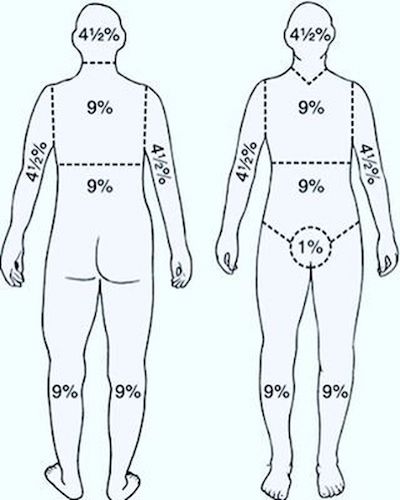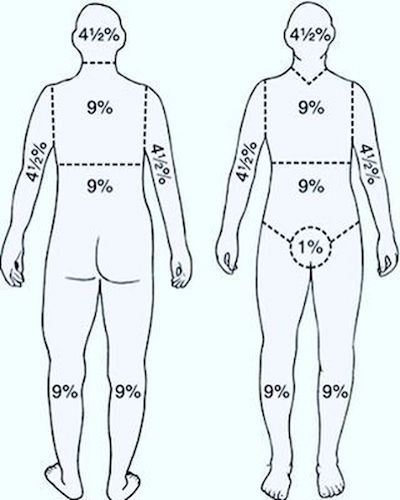
How to calculate PRP Coverage
“The Rule of Nines, also known as the Wallace Rule of Nines, is a tool used by trauma and emergency medicine providers to assess the total body surface area (TBSA) involved in burn patients. Measurement of the initial burn surface area is important in estimating fluid resuscitation requirements since patients with severe burns will have massive fluid losses due to the removal of the skin barrier. Source
The Rule of Nines is also an approach to calculate the percentage of a patient’s total skin surface impacted by PRP. When you tell your story, your estimate of coverage will be more readily believed — by friends and healthcare providers — if you preface your estimate with the phrase, “Based on the Rule of Nines…yada, yada, yada.”
- The front and back of the head and neck equal 9% of the body’s surface area.
- The front and back of each arm and hand equal 9% of the body’s surface area.
- The chest equals 9% and the stomach equals 9% of the body’s surface area.
- The upper back equals 9% and the lower back equals 9% of the body’s surface area.
- The front and back of each leg and foot equal 18% of the body’s surface area.
- The groin area equals 1% of the body’s surface area.
Sample Calculation
Bill McCue
Onset: early August 2012
Maximum coverage: December 2012
 Front and back of head and neck: 9%
Front and back of head and neck: 9%- Front and back of both arms and both hands: 18%
- Chest and stomach: 18% (my chest was the first to fall victim to the inflammation, my stomach the last)
- Upper and lower back: 18%
- Front and back of each leg and foot: 36%
- Groin area: 1%
TOTAL: 100%
NOTE: For most PRP patients it may be easier to calculate body surface coverage starting with 100% and deducting the areas NOT impacted by PRP.
